Description
Name in North American Boletes: Meiorganum curtisii
Genus: Pseudomerulius
- Genus 2: Meiorganum
- Genus 3: Paxillus
Species: curtisii
Common Name:
Tells: Bolete or polypore? Grows shelf-like (no stem) on decaying wood (esp. hemlock & pine). Strongly veined, wavy, orange-yellow pores bruise darker orange.
Other information: Pale brownish- to olive-yellow, fan- to petal- or semicircular-shaped cap often has reddish brown stains. Pores do not separate well from pale yellow cap flesh. Old & dried specimens reportedly smell “disagreeable” & are mildly bitter.
Edibility: Unknown.
CHEMICAL TESTS:
- NH4OH (Ammonia): Cap skin turns purplish red to reddish brown or blackish.
- KOH: Cap skin turns purplish red to reddish brown or blackish.
- FeSO4 (Iron Salts): No data.
Links:
 |
0 |  |
0 |  |
218 |

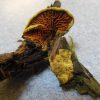
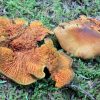
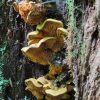
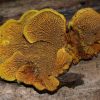
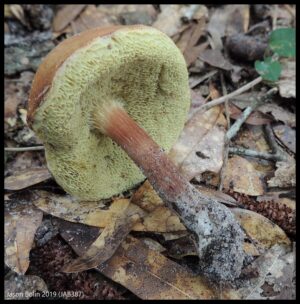

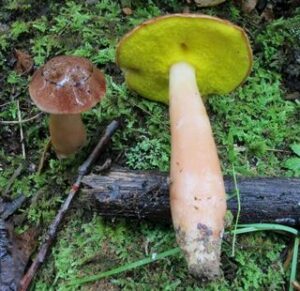
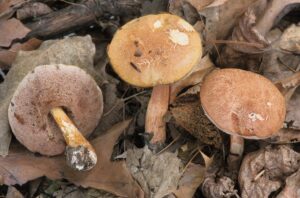
Got something to discuss?